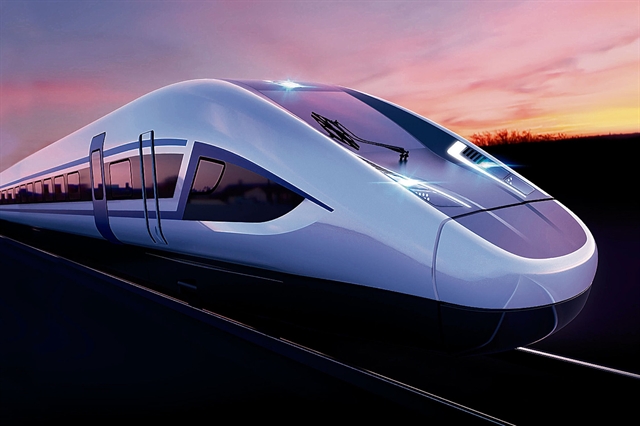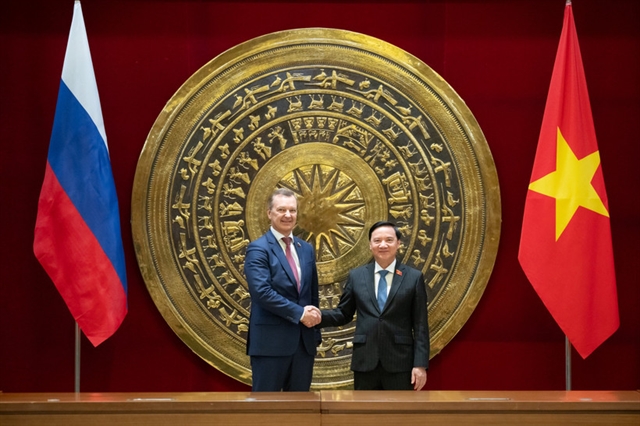 Society
Society


|
| Illustration of a future train on the high-speed railway. Photo baochinhphu.vn |
HÀ NỘI — The Ministry of Transport has committed to actively collaborate with ministries, sectors and localities in implementing the North-South High-Speed Railway project, the largest and most capital-intensive infrastructure project in Việt Nam’s history, to ensure all necessary conditions for commencing construction by the end of 2027.
According to Minister Trần Hồng Minh, the ministry has set out detailed and specific progress milestones for the North-South High-Speed Railway project, aiming to start this mega-project in the fourth quarter of 2027.
The project is the largest in Việt Nam in terms of scale, capital demand and resource requirements. The railway line is approximately 1,541km long, connecting Hà Nội and HCM City and passing through 20 provinces and cities.
The project's preliminary total investment is estimated at VNĐ1.71 quadrillion (US$67 billion).
Minh stated that the project adopts modern technology and engineering, integrating multiple specialised fields. It is the first high-speed railway project to be implemented in Việt Nam amid domestic constraints, including a limited workforce, underdeveloped railway industry expertise and an incomplete legal framework for project execution.
Additionally, special mechanisms and policies approved by the National Assembly, which involve the management of multiple ministries, sectors and localities, significantly impact the project's progress and implementation requirements.
He acknowledged that these factors pose considerable challenges for the ministry, requiring strong and determined involvement from the entire political system.
Minh said the ministry is drafting a resolution to submit to the Government, guiding ministries, sectors and localities in organising and implementing specific tasks with defined completion timelines to ensure workers can break ground on the project by the end of 2027.
The ministry is prioritising two key task groups.
Specifically, it is developing and issuing legal documents detailing the content, procedures and authority for implementing special mechanisms and policies approved by the National Assembly for the project.
Among the 19 special mechanisms and policies approved for the project, several critical policies require further research, legal documentation and detailed guidance to establish a sufficient legal framework for implementation.
The ministry considers this an immediate priority that ministries, sectors and localities must focus on directing and executing without delay.
In the near future, the ministry will closely coordinate with other relevant agencies to submit legal documents to the Government and the Prime Minister for issuance or enact them within its authority to meet the project’s implementation requirements.
According to Minh, the ministry will carry out necessary tasks for the project, including submitting the investment proposal for the Prime Minister’s approval, selecting contractors, conducting site clearance, relocating technical infrastructure and preparing material sources to ensure conditions are met to break ground by the proposed timeline.
Ministries, sectors and localities will focus on key tasks, with specific progress milestones starting in 2025. This includes selecting consulting contractors to conduct surveys, preparing a feasibility study report and carrying out related tasks.
The feasibility study report will be submitted to the Prime Minister in the fourth quarter of 2026.
The State Appraisal Council will then evaluate and submit the feasibility study report for the Prime Minister’s approval by the end of the first quarter of 2027.
From 2025, localities will handle compensation, resettlement for affected households and relocation of affected power infrastructure, aiming for completion by 2027 to hand over cleared land for construction.
The ministry will oversee the selection of contractors for the implementation phase, sign contracts and ensure all conditions are met for construction to commence in the fourth quarter of 2027. — VNS




